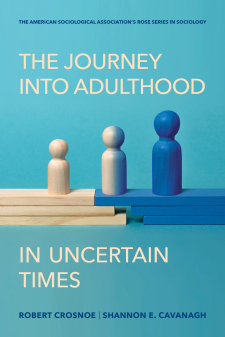Main navigation
Sean F. Reardon and Kendra Bischoff of Stanford University have released a new U.S. 2010 report entitled "More Unequal and More Separate: Growth in the Residential Segregation of Families by Income, 1970-2009." Here's the abstract:
As overall income inequality grew in the last four decades, high- and low-income families have become increasingly less likely to live near one another. Mixed income neighborhoods have grown rarer, while affluent and poor neighborhoods have grown much more common. In fact, the share of the population in large and moderate-sized metropolitan areas who live in the poorest and most affluent neighborhoods has more than doubled since 1970, while the share of families living in middle-income neighborhoods dropped from 65 percent to 44 percent. The residential isolation of the both poor and affluent families has grown over the last four decades, though affluent families have been generally more residentially isolated than poor families during this period. Income segregation among African Americans and Hispanics grew more rapidly than among non-Hispanic whites, especially since 2000. These trends are consequential because people are affected by the character of the local areas in which they live. The increasing concentration of income and wealth (and therefore of resources such as schools, parks, and public services) in a small number of neighborhoods results in greater disadvantages for the remaining neighborhoods where low- and middle-income families live.
Writing in today's New York Times, Sabrina Tavernise says the report "raises, but does not answer, the question of whether increased economic inequality, and the resulting income segregation, impedes social mobility":
Much of the shift is the result of changing income structure in the United States. Part of the country’s middle class has slipped to the lower rungs of the income ladder as manufacturing and other middle-class jobs have dwindled, while the wealthy receive a bigger portion of the income pie. Put simply, there are fewer people in the middle. But the shift is more than just changes in income. The study also found that there is more residential sorting by income, with the rich flocking together in new exurbs and gentrifying pockets where lower- and middle-income families cannot afford to live. The study — part of US2010, a research project financed by Russell Sage and Brown University — identified the pattern in about 90 percent of large and medium-size metropolitan areas for 2000 to 2007. Detroit; Oklahoma City; Toledo, Ohio; and Greensboro, N.C., experienced the biggest rises in income segregation in the decade, while 13 areas, including Atlanta, had declines. Philadelphia and its suburbs registered the sharpest rise since 1970.
The report can be read and downloaded below. Launched in 2009 with a grant of over $1.2 million to Professor John Logan of Brown University, the U.S. 2010 project is an investigation of the subtle shifts and long-term trends in American life and an analysis of what these developments may mean for the future. You can learn more here. Growth in the Residential Segregation of Families by Income, 1970-2009





